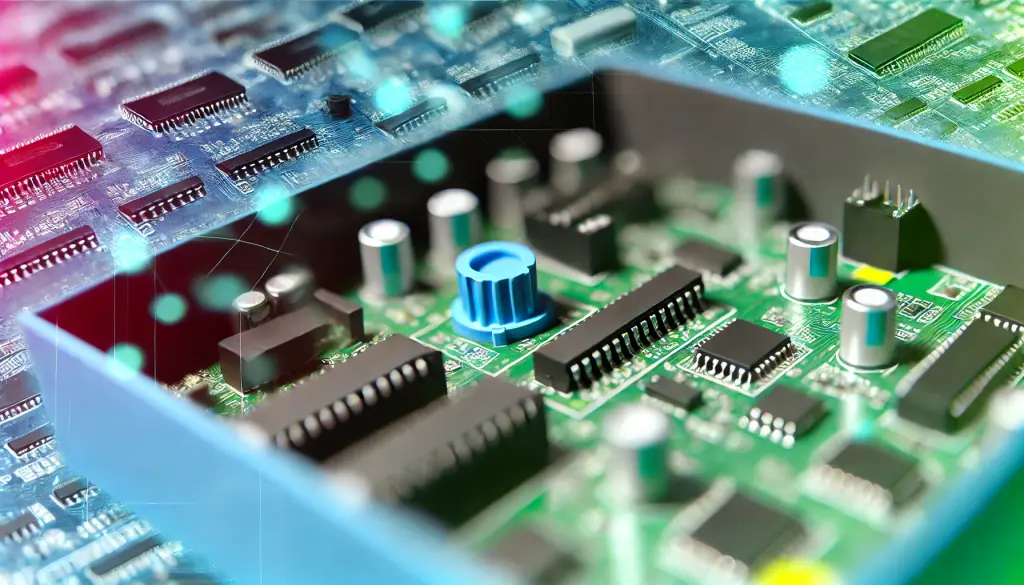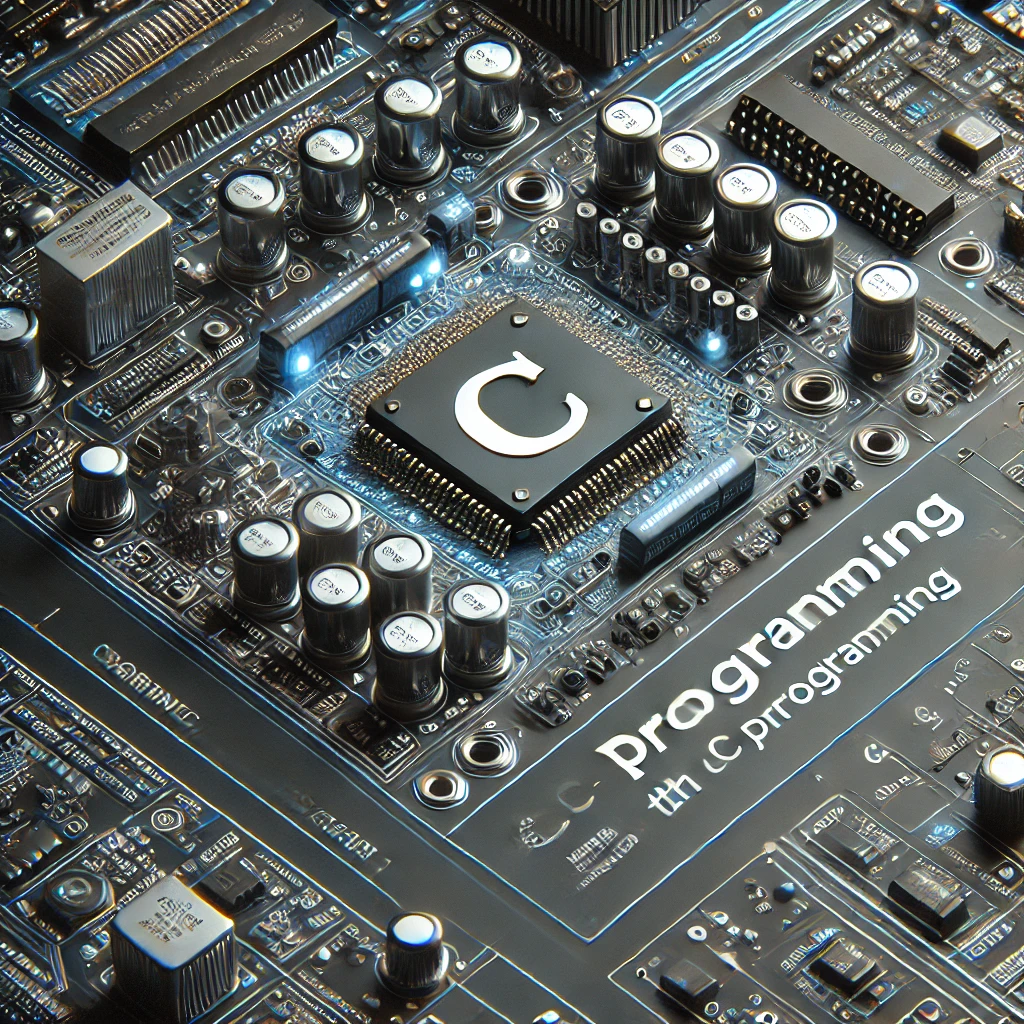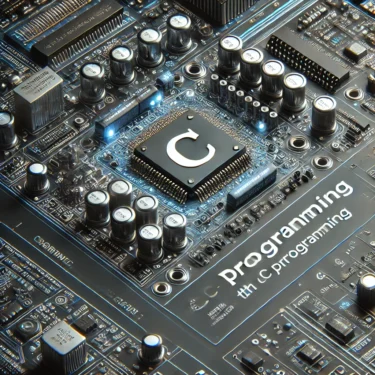- 1 1. Introduction
- 2 2. Why C is Used in Embedded Systems
- 3 3. Basic Structure of Embedded Development with C
- 4 4. Optimization Techniques for Embedded C Programs
- 5 5. Applications of C in Embedded Systems
- 6 6. Challenges in Embedded Development and the Future of C
- 7 7. Conclusion and Moving Toward Practice
1. Introduction
Embedded systems are used everywhere in our daily lives. From household appliances, automobiles, and medical devices to industrial machinery, they are built into various products, functioning as small computers dedicated to specific tasks. In embedded system development, the programming language used plays a crucial role. Among them, the C language stands out for its reliability and efficiency, making it one of the most widely adopted languages in the field.
This article explains why C is the dominant choice for embedded systems. We will also cover the basics of embedded development using C, along with concrete application examples.
2. Why C is Used in Embedded Systems
Although various programming languages can be used for embedded system development, C remains exceptionally popular. Here, we explain the reasons for this, and highlight the characteristics of C in embedded systems compared to other languages.
Characteristics and Advantages of C
- Efficiency and Easy Memory Management
C allows low-level hardware control and fine-grained memory management. This is especially advantageous in resource-constrained embedded systems, where efficient use of limited memory and processing power is essential. The ability to manually manage memory makes C particularly suited for such environments. - Low-Level Control
Embedded systems often require direct hardware control. C enables coding at a level close to assembly language, allowing operations such as port control and timer configuration. This makes it possible to execute precise, real-time control efficiently. - Compact and Fast Executable Code
C compiles into very compact binary code. Compared to high-level languages such as Java or Python, C produces smaller executables with faster execution speeds, enabling high-performance, stable processing while minimizing resource usage.
Comparison with Other Languages
- Differences from Java and Python
Java and Python excel in flexibility and ease of use, but are less suitable for embedded systems. Java runs on a virtual machine (JVM), which introduces overhead, reducing real-time responsiveness. Python is an interpreted language, making it unsuitable for resource-limited environments. - Comparison with C++
C++ is also used in embedded systems, but its complexity and object-oriented features often result in higher memory usage compared to C. For small devices or systems requiring minimal resources, C’s simplicity and low-level capabilities give it the edge.
3. Basic Structure of Embedded Development with C
In embedded system development, it is essential to fully leverage C’s capabilities to write code that directly interacts with hardware. This section outlines the basic structure, concepts, and key elements of embedded C development.
Basic Structure of Embedded Systems
- Microcontroller Control
At the heart of an embedded system is a microcontroller (MCU) that controls the entire system. In C, you write code to send commands to the MCU via I/O ports. For example, turning an LED on or off involves sending signals through an I/O port, which C handles at the hardware level. - Use of Pointers
Pointers are critical in embedded development, allowing direct access to specific memory addresses and efficient data processing. In memory-constrained environments, pointer-based memory management is essential for optimizing performance. - Structures and Function Pointers
Structures allow grouping of multiple data elements, making them useful for managing complex data in embedded systems. Function pointers enable flexible, memory-efficient processing, particularly for interrupt handling or task switching in real-time systems.
Basic Development Steps
- Initialization and Setup
Begin by initializing the MCU and I/O functions—such as configuring pin modes or clock settings. C’s straightforward syntax allows quick setup. - Input Acquisition and Processing
Embedded systems receive input from sensors, process it, and determine output. For example, reading temperature data and adjusting an air conditioner accordingly. Conditional statements likeifandswitchin C are effective here. - Output Control
Outputs such as turning LEDs on/off or controlling motor rotation are also handled in C. Its simplicity allows real-time device control efficiently.
4. Optimization Techniques for Embedded C Programs
Optimizing programs is crucial in embedded development due to memory and processing constraints. Here, we present key C optimization techniques to maximize performance.
Improving Memory Efficiency
- Remove Unused Variables and Functions
Limit variable scope and avoid unnecessary temporary variables to reduce memory usage. - Loop Unrolling
Manually expanding frequently used loops reduces function call overhead and can improve execution speed. - Optimize Data Layout
Arrange structure members to optimize memory alignment, improving access speed. Placing data in contiguous memory locations can also maximize cache efficiency.
Improving Execution Speed
- Use Inline Functions
Inlining frequently called small functions eliminates function call overhead. - Optimize Loops
Reduce loop condition checks and move unnecessary calculations outside the loop for better efficiency. - Use Registers
Theregisterkeyword can be used to store frequently accessed variables in CPU registers for faster access.
Using Compiler Optimization Options
Leverage compiler optimization flags such as -O1, -O2, and -O3 in GCC to improve performance and reduce binary size according to project needs.

5. Applications of C in Embedded Systems
Thanks to its efficiency and low-level control, C is widely used across industries. Below are some application examples.
Automotive Industry
C plays a key role in engine control, braking, transmission, and even autonomous driving. ECUs (Engine Control Units) require precise, high-speed computations for tasks like fuel injection control and combustion optimization. C ensures real-time performance, reliability, and ease of debugging.
Medical Devices
Devices like ventilators and ECG monitors require real-time processing of vital signs with immediate response. C’s lightweight and efficient nature enables safe, fast, and accurate operation.
Home Appliances
C is used in air conditioners, refrigerators, and washing machines for real-time sensor data processing and efficient, low-power operation.
Industrial Equipment
In manufacturing, C is used in industrial robots, automation systems, and sensor networks, offering optimized memory usage and reliable, high-speed control.
6. Challenges in Embedded Development and the Future of C
Challenges
- Memory and Performance Constraints — Efficient resource usage is essential in low-power, battery-driven devices.
- Real-Time Requirements — Delays in systems like airbags or industrial machines can be catastrophic.
- Security — With IoT connectivity, preventing vulnerabilities such as buffer overflows is crucial.
Future of C
- Coexistence with Other Languages — Rust and MicroPython may grow in use, but C’s simplicity and performance ensure its ongoing role.
- Role in IoT — As IoT expands, C will remain critical for low-power, real-time control.
- Enhanced Tools and Standards — The adoption of static analysis tools, safer libraries, and ISO standard updates will strengthen C’s role in secure, efficient embedded development.
7. Conclusion and Moving Toward Practice
C’s role in embedded systems is rooted in its efficiency, low-level control, and speed, making it the top choice in many real-time and resource-constrained environments.
Key Points
- C offers unmatched memory management and low-level control, producing lightweight, high-performance code.
- Despite alternatives like Rust, C will continue to be central in embedded development alongside IoT advancements.
Learning Resources
- Open-Source Projects — Study C-based embedded projects on GitHub to learn coding styles and optimization techniques.
- Hands-On Practice — Use development boards like Arduino or Raspberry Pi to gain real-world experience interacting with sensors and actuators.



